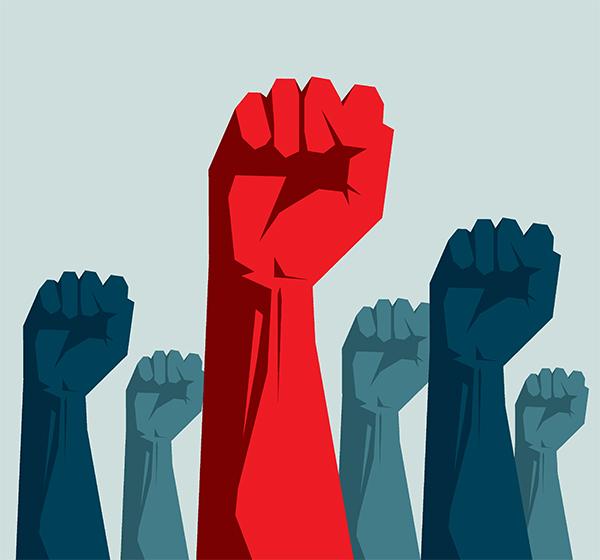by Kay Kirscht
Quick Summary
The Gopher protocol, a.k.a., “The Gopher Project,” a University of Minnesota-developed information organization and transmission system (a precursor to today’s Internet), recently celebrated its 25th anniversary and was featured in The Chronicle of Higher Education: “How Gopher Nearly Won the Internet.”

The Gopher protocol, a.k.a., “The Gopher Project,” a University of Minnesota-developed information organization and transmission system (a precursor to today’s Internet), recently celebrated its 25th anniversary and was featured in The Chronicle of Higher Education: “How Gopher Nearly Won the Internet.”
Turns out there is a connection between The Chronicle and Gopher - it was one of the first publications to go online, published digitally in one of Gopher's folders.
University of Minnesota Libraries also share an important connection to the early information service and the Internet. Gopher, a set of related protocols working within an application allowing and specifying how data should be transmitted (TCP/IP Internet protocol suite), was developed in 1991 by programmers working for the University of Minnesota on a volunteer basis.
Many colleges sought to develop campus-wide information systems (known as “CWIS”) at this time, but Minnesota's Gopher team (led by Mark McCahill and featuring the talents of Farhad Anklesaria, David Johnson, Paul Lindner, Daniel Torrey, and Bob Alberti) built a system that not only met the need for sharing information across campus; Gopher had the potential to go worldwide.
The Gopher protocol - toothy, innovative, simple and robust - efficiently parses data through a series of hierarchical and fully-searchable, menu-bearing file folders. The folders can contain text files, image files, downloadable programs, or sub-folders. Gopher also links to gateways leading to other Internet information services, such as FTP or Usenet. Gopher protocol did not use the bulletin board system (BBS) of the time, but used the Internet itself to relay information, suddenly giving the immense but under-utilized global network of the early 90's a purpose beyond academic projects and military defense backup.
I sat down with Bob Alberti, University of Minnesota security analyst and one of Gopher’s programmers, and asked what the University of Minnesota Libraries and our racks of stacks had to do with that hierarchy of 8-bit-rendered folders.
“You must realize - at the start, Gopher ran off of an Apple IIc. Cast your mind back to 1991-1992: there was no Internet, no search engines, or any awareness of them. The big question was: ‘How do we organize this data?’ We don’t! We throw keywords into a database, search, and build smarter search engines. Even back then, there was an overwhelming amount of information, with more data coming in every day.
“So, programmers turned to Library Sciences for a solution. We spent a lot of time at EDUCAUSE-affiliated, CUMREC events (College and University Machine Records Conferences). Much of what we did was determine how to organize the data. Library Sciences admonished us to attach tags to data, then categorize it into files. And were they ever upset when we did not immediately produce software to manage tags!
"With 20/20 hindsight... I understand where they were coming from. But we didn't know what we were doing, and they didn't know what they were asking. We were doing this in our spare time, and couldn’t attach formalized tags (metadata and tags either did not yet exist, or we were unaware of them) to all that data. You’d be waiting to this day for a file. Instead, we developed new tools to get around it.
“Meanwhile, data that needed to go online was mounting. It was very much like Lucy and Vivian trying to sort out candies on a production line; the conveyor belt was speeding up, and we were struggling to keep up. That’s where Gopher got left behind in some ways - it was designed for files and folders of data. Meanwhile, the Web was clearly intended to display images, but no one could agree on how to handle multimedia: integrated video, GIF, or a picture.
“Marc Andreesen, who ran Netscape, introduced the IMG tag to the HTTP protocol by executive fiat, and installed the needed innovation: Andreesen’s Netscape browser tagged all visual files “<img>” - doing it ‘his’ way. JPEG as an image protocol was still being hammered out; images looked jagged and ‘terraced,’ and GIF as an image protocol was large and inefficient. Meanwhile, Gopher could move videos - but only as large files; it could not display videos. Netscape’s new tagging convention won, and we ended up with an Internet with fully integrated visuals (that was hungry for computer and server resources and bandwidth ) able to display text and multimedia together.
“At that time, developers had to be willing to step out and say, ‘Let’s try this!’ Gopher stepped in another direction (choosing speed and efficiency) when Netscape picked up on integrated text, images, and video. Moore’s Law took a long time to soak in to the academic world. Intel’s co-founder, Gordon Moore, discovered it when he noticed the number of transistors per square inch on integrated circuits doubled every year, and predicted the trend would continue."
Where is Gopher now?
Insert theme from "Caddyshack" here: "I'm alright, don't nobody worry 'bout me!" Gopher is still out there, and very much alive. “Gopher is currently a toy of hobbyists,” Bob says.
For my part, I disagree that it’s merely a “toy,” although revisiting that 8-bit, pre-Internet land of data folders has been fun. The Overbite Project, hosted by Floodgap Systems, puts it this way: “What's Gopher good for? Gopher isn't a ‘mini-Web’: it's an efficient, low-impact way to collect and organize documents, files, and services. Its hierarchical nature and menu-document model complement the Web and FTP, and it is faster to access and simpler to process.”
The Overbite Project provides a cross-platform (Mac OS, Windows, Linux) add-on for Mozilla browsers (i.e., Firefox). There is no Overbite/Gopher support for iOS Apple devices, but there is an app in the iTunes store called iGopher that brings the joy Gopher browsing to iPhone or iPad for $1.99. Overbite for AndroidTM mobile is still in the testing stage, but available. Overbite is no longer compatible with Chrome but will still run on older, pre-v.24, installations.
The Once and Future Gopher?
Gopher has a possible future use that flows back to the stark beauty of its original design: efficient and fast, Gopher's low-bandwidth requirements are perfect for browsing far afield.
“Once we colonize Mars,” Bob says, not looking all that far into the future, “bandwidth will always be at a premium and incredibly expensive to maintain and use. The rich, multimedia Internet will not be what explorers on the Red Planet need. What they will need is information: Martian geology data, text system reports, terrain maps. We would only have to pay for the data used.”
From an innovative team of University of Minnesota programmers working with librarians (sans funding) to a buck-toothed rodent on Mars? We can only hope. Regardless, Gopher has come a long way. And the 25-year-old information system still delivers: transmitting data between campuses and from science labs to mountain outposts. And one day, perhaps, from an orbiting spaceship to colonies below.


